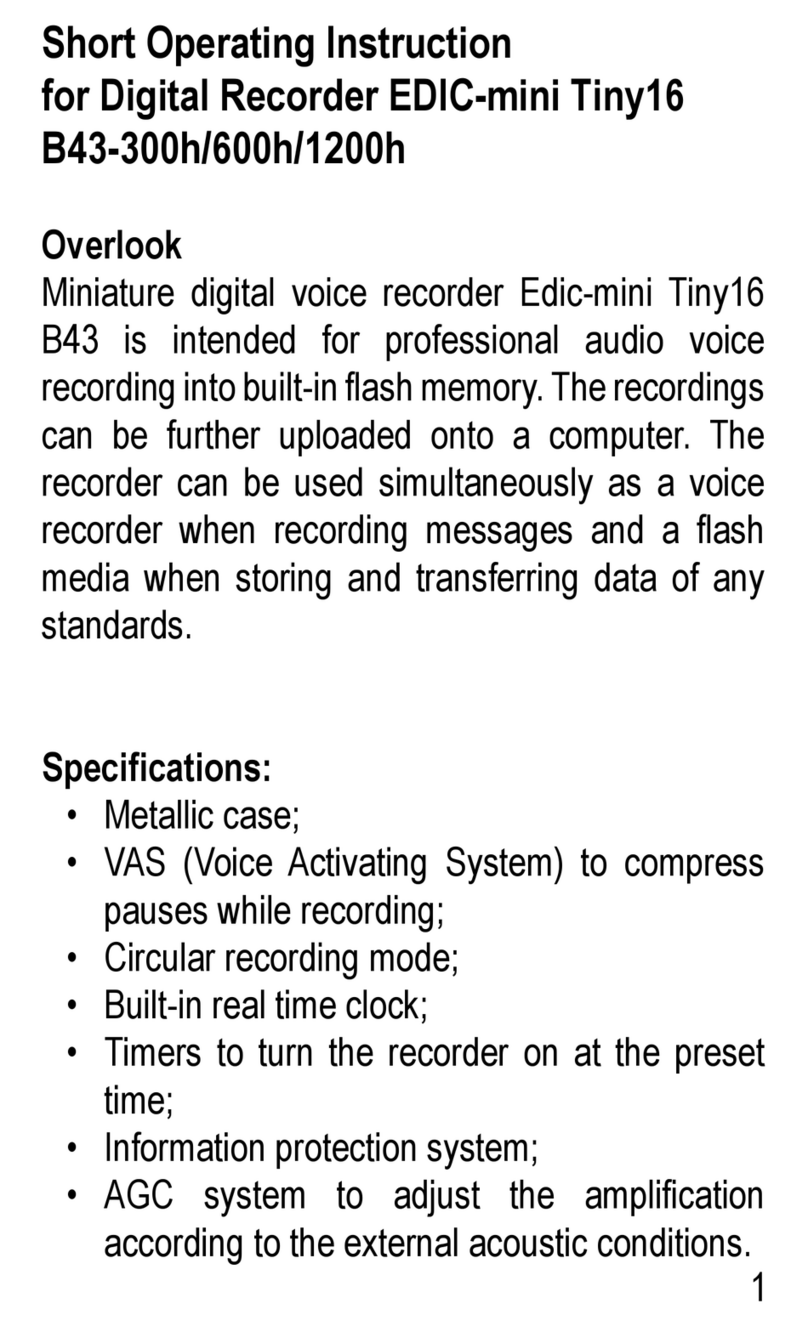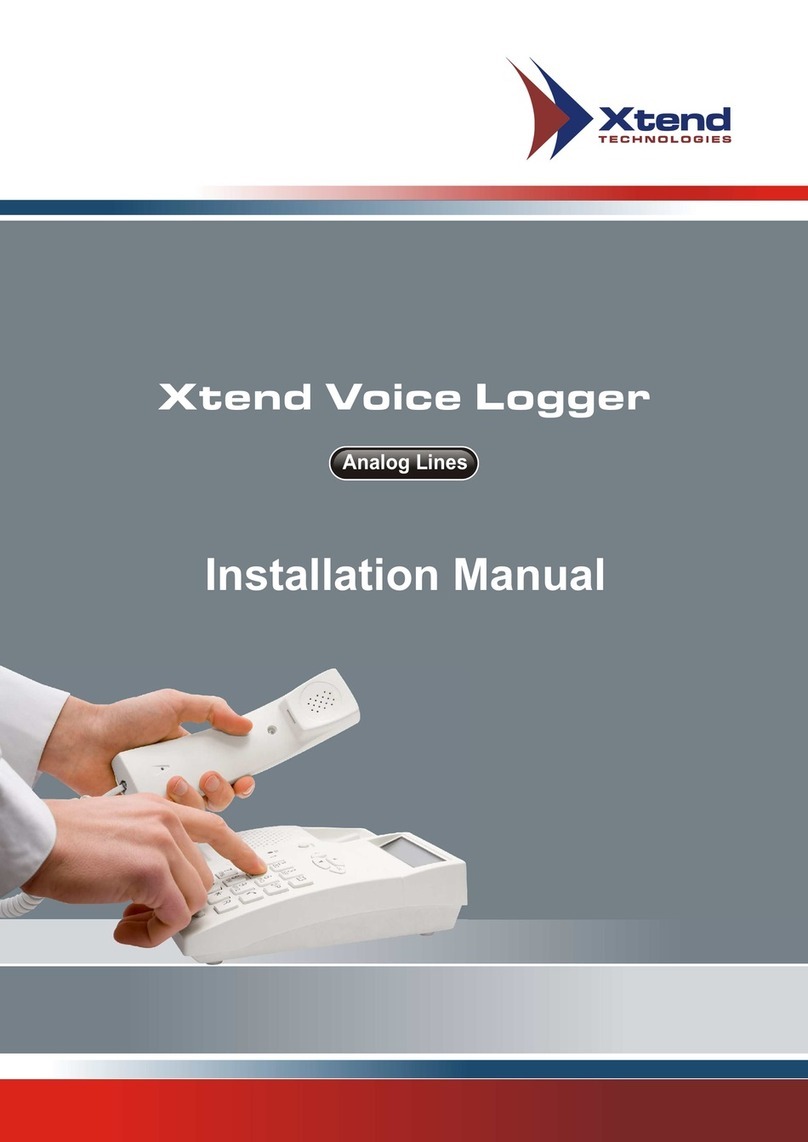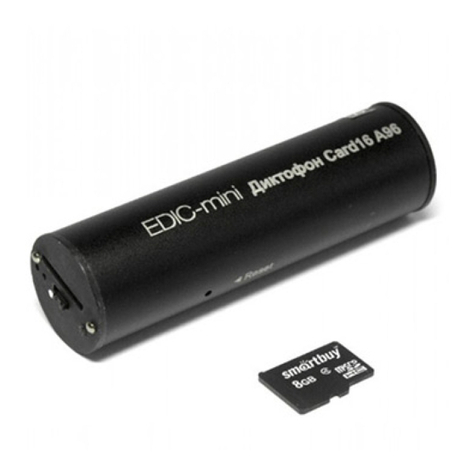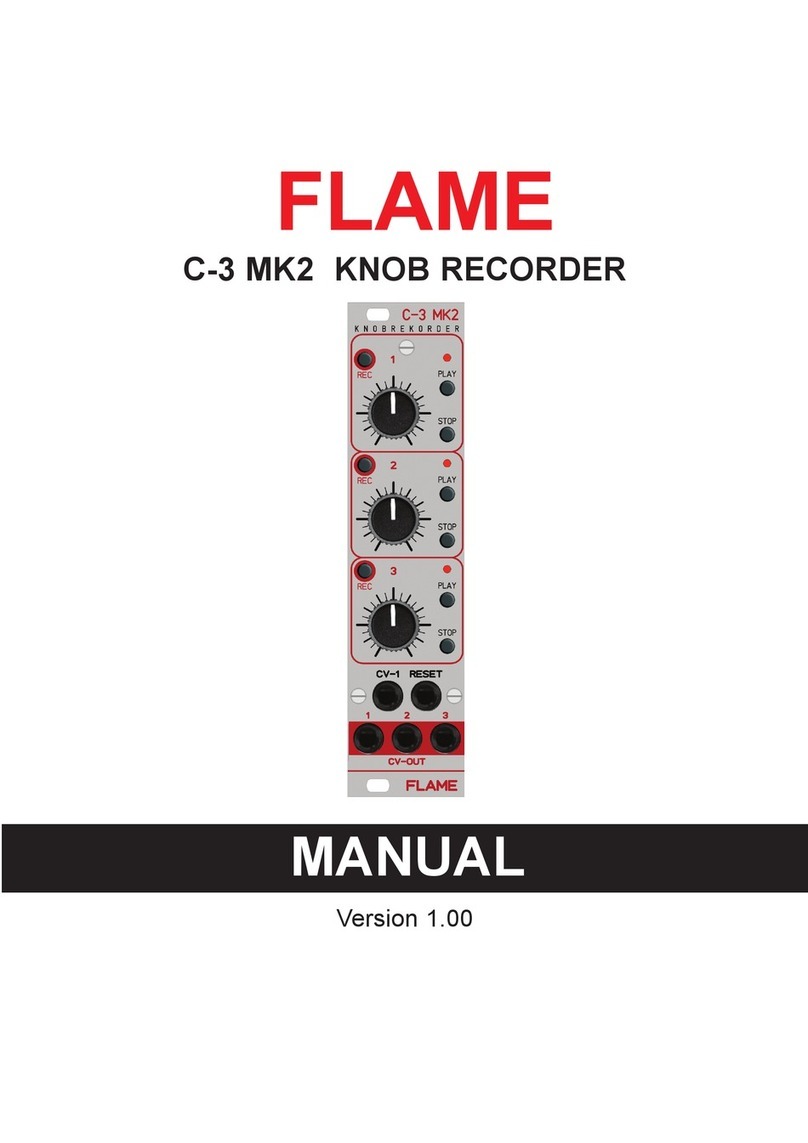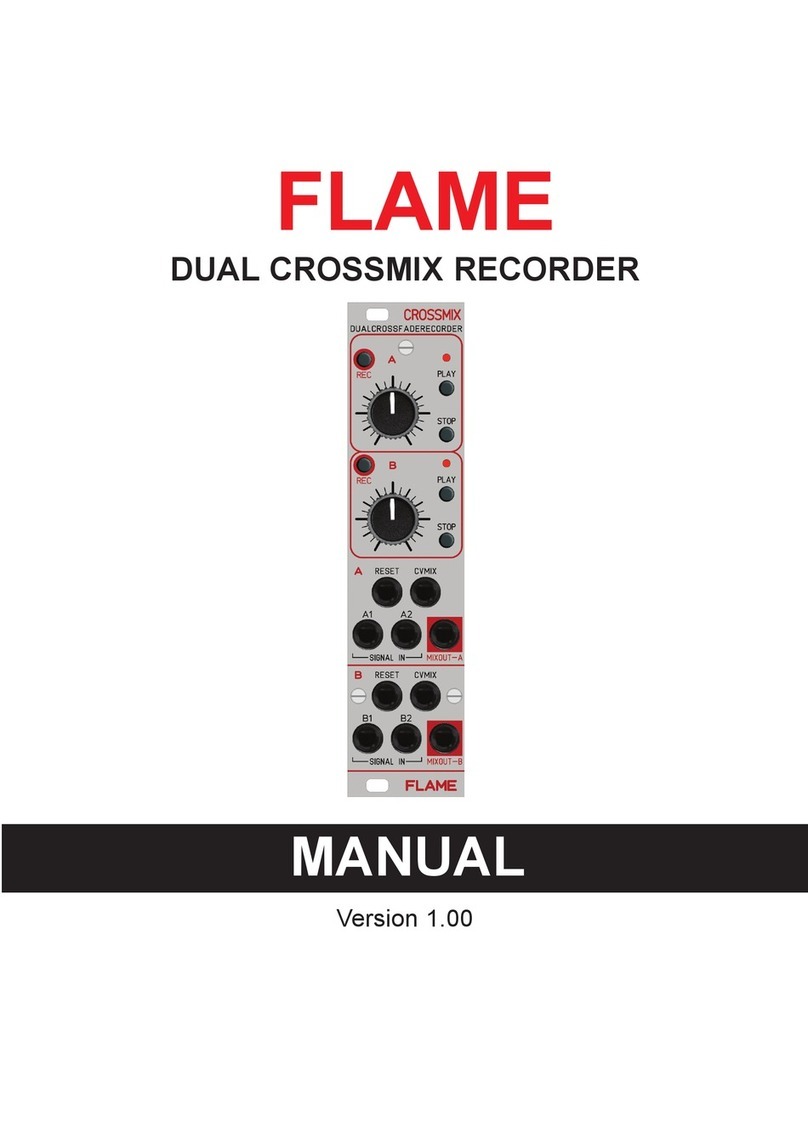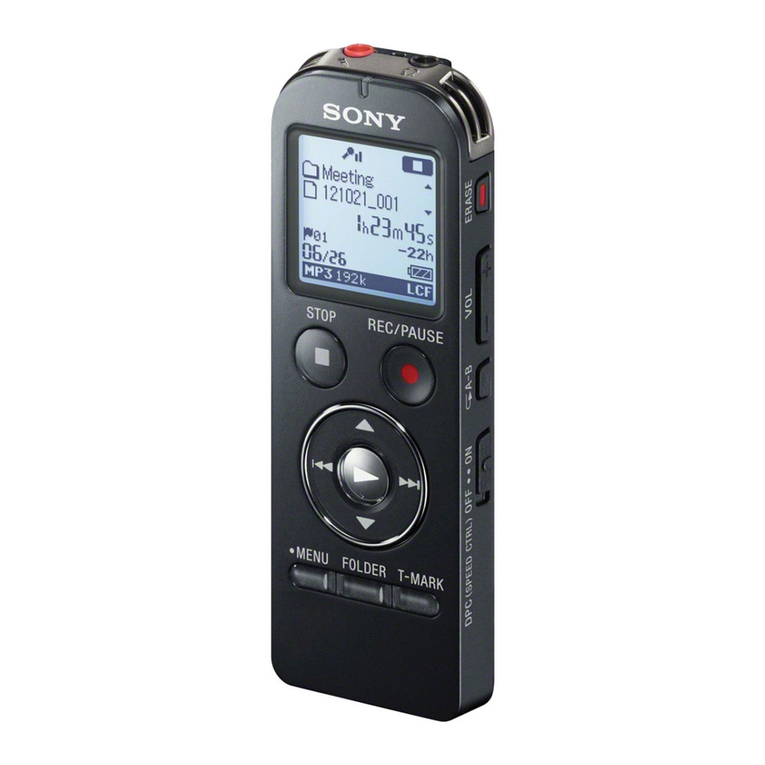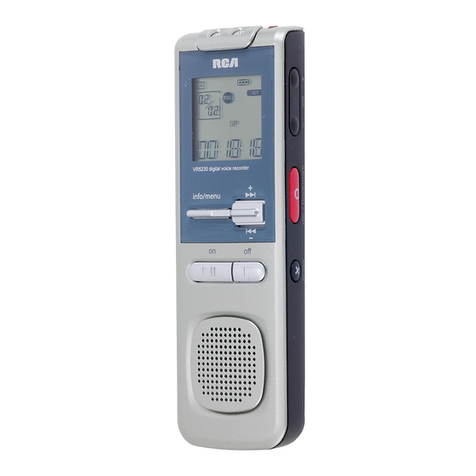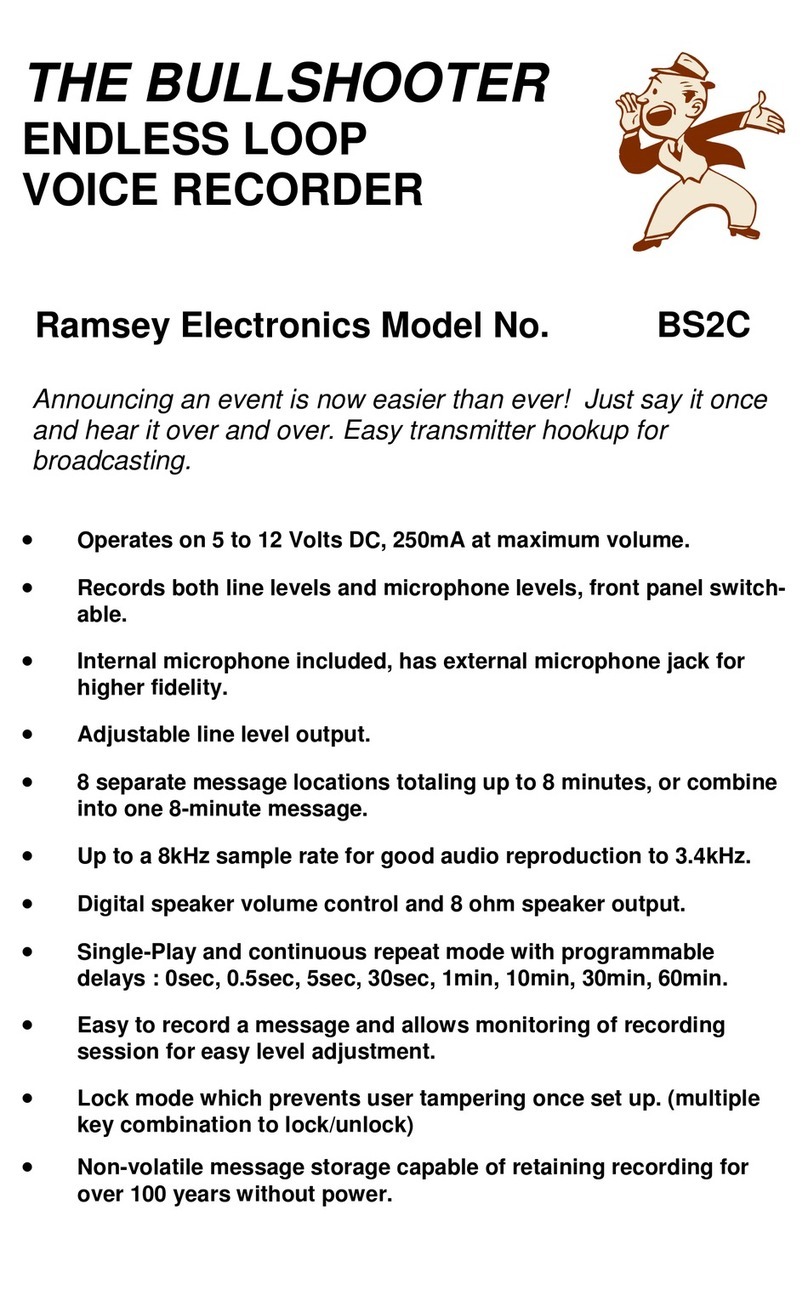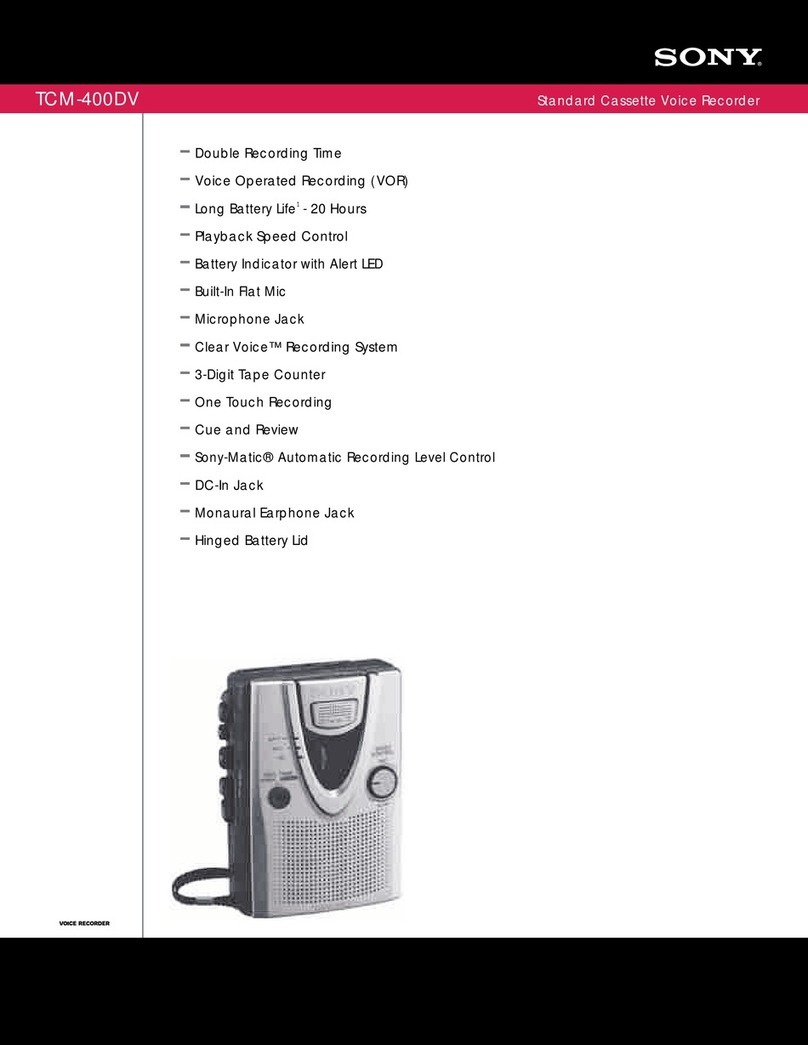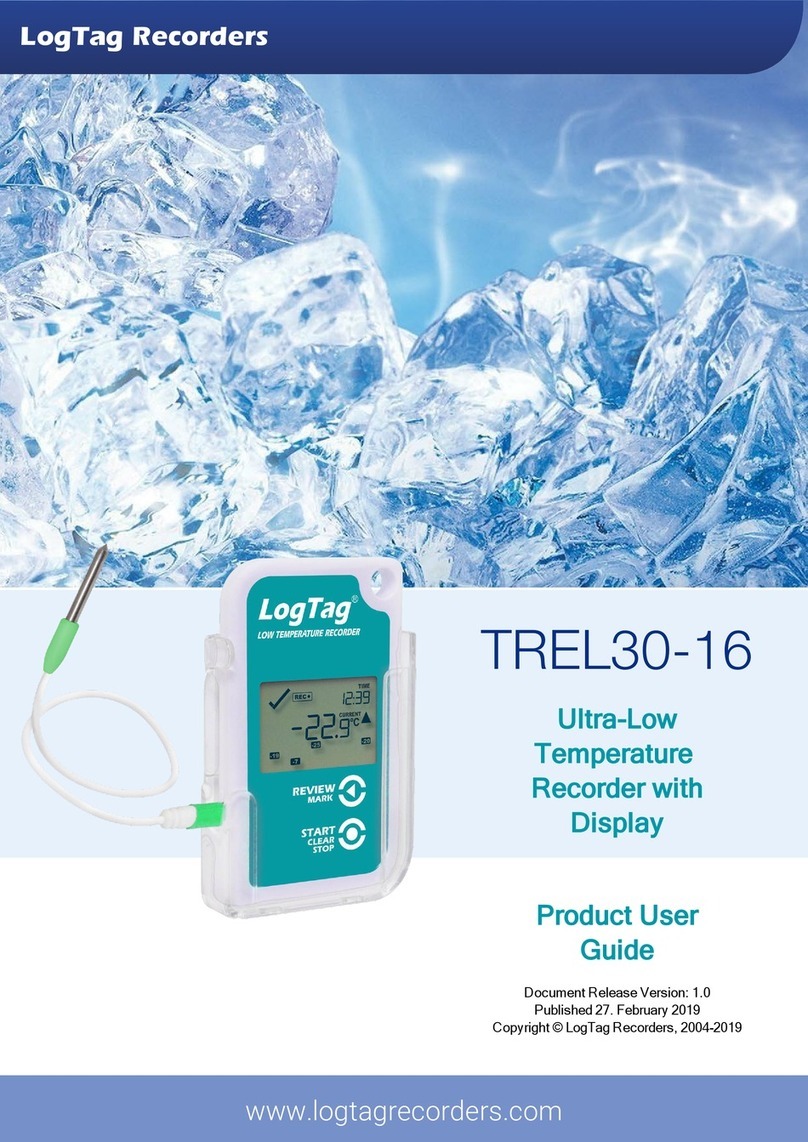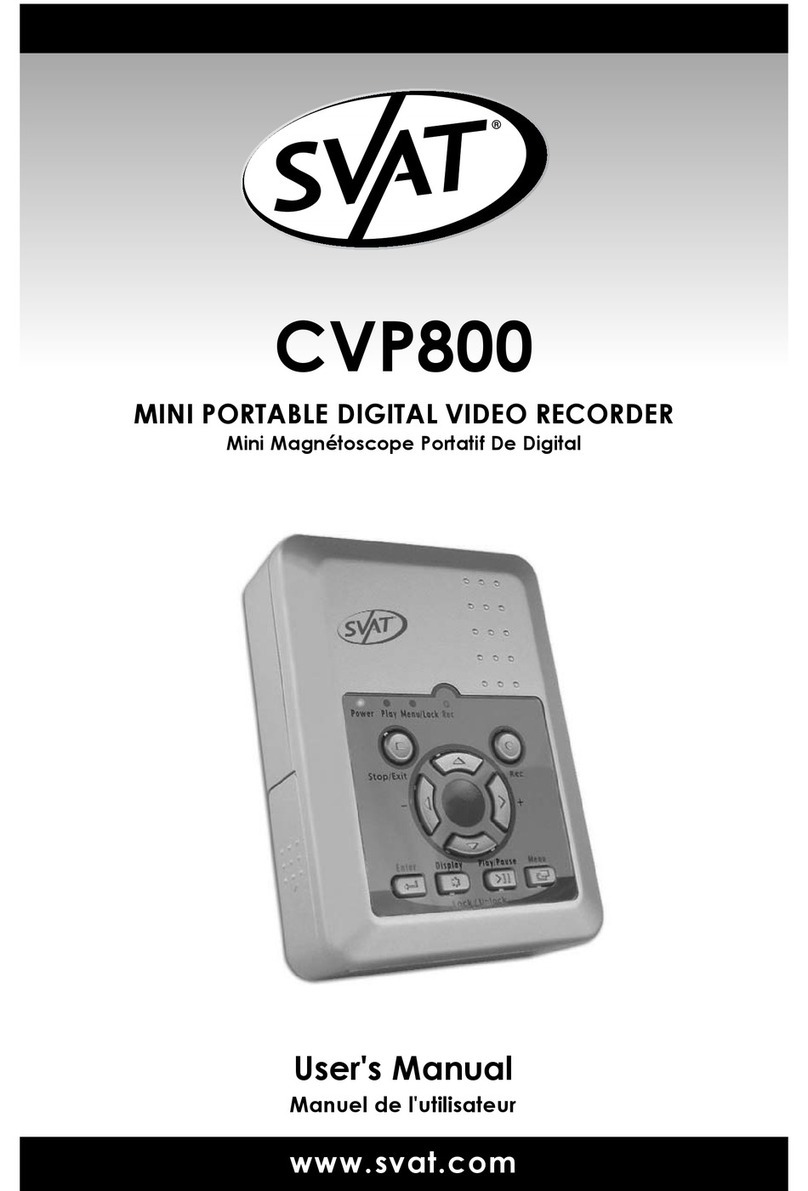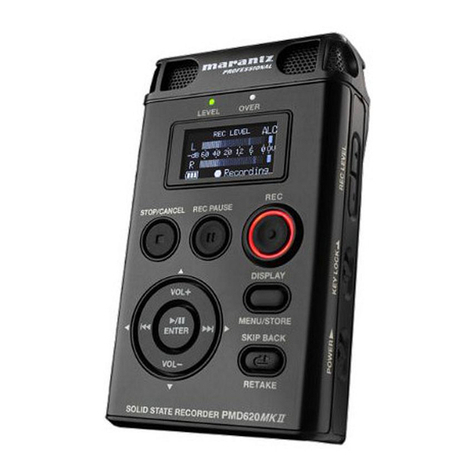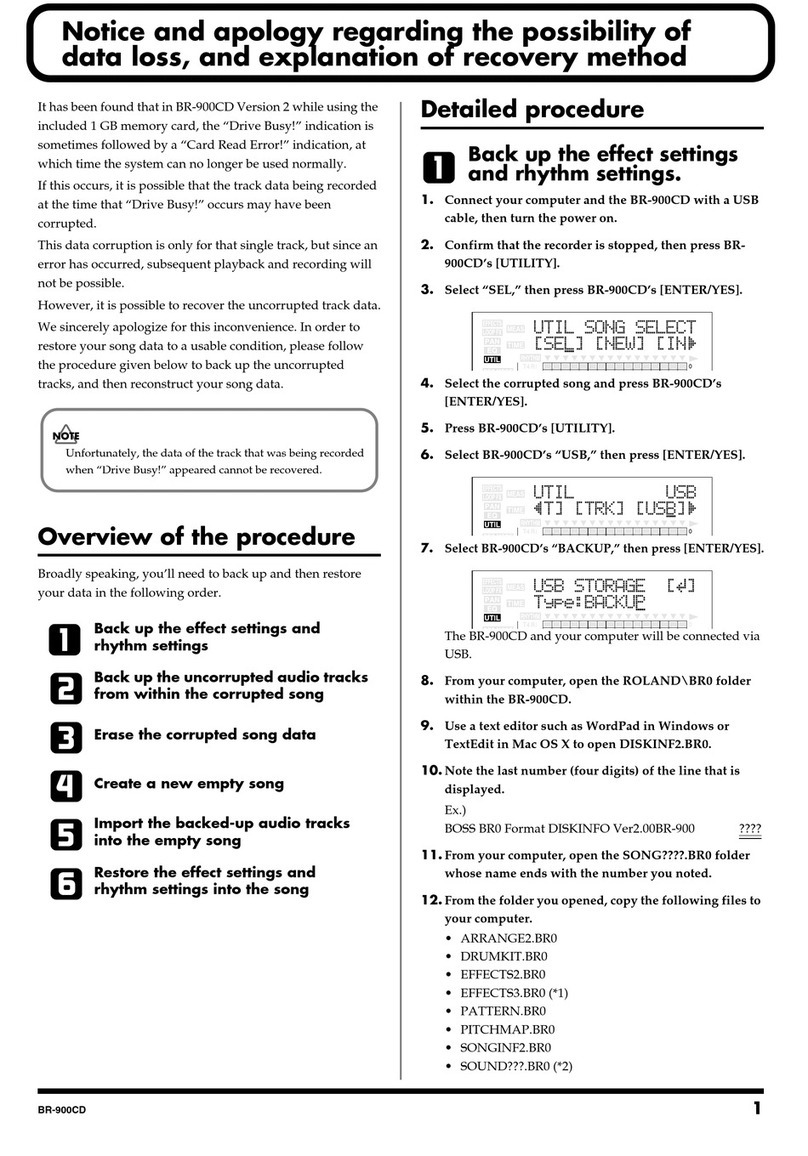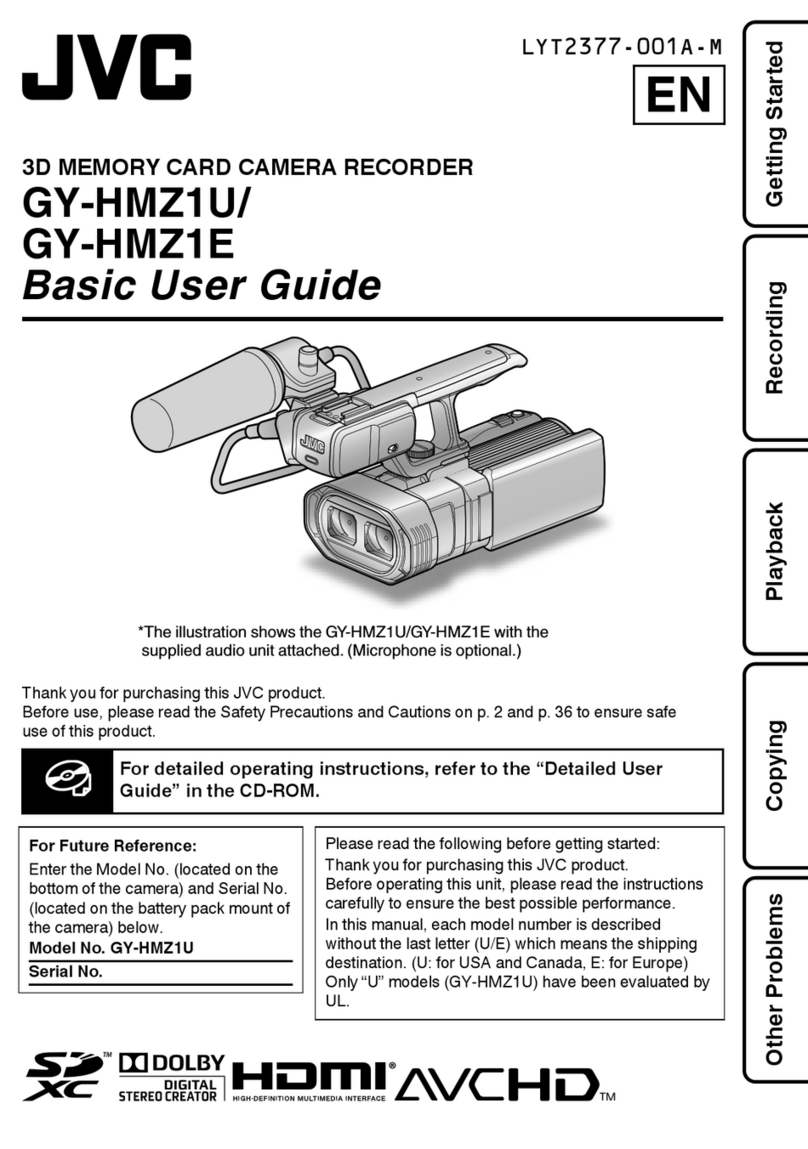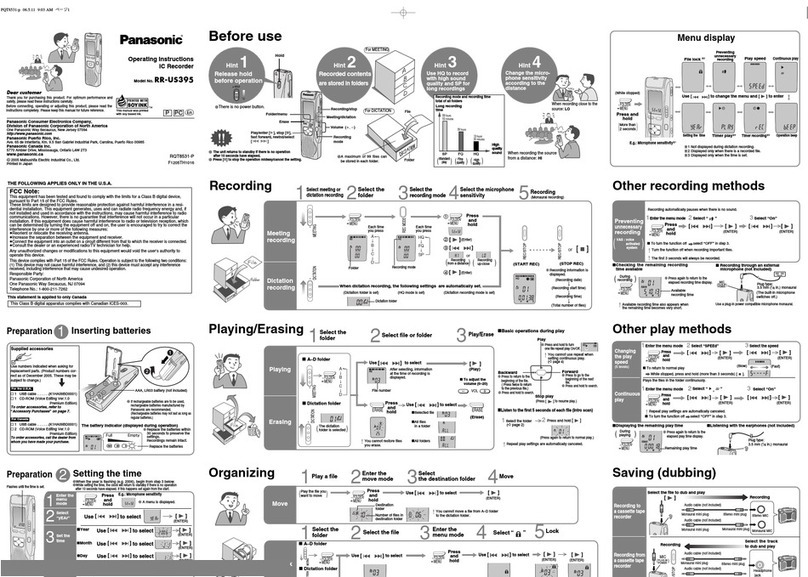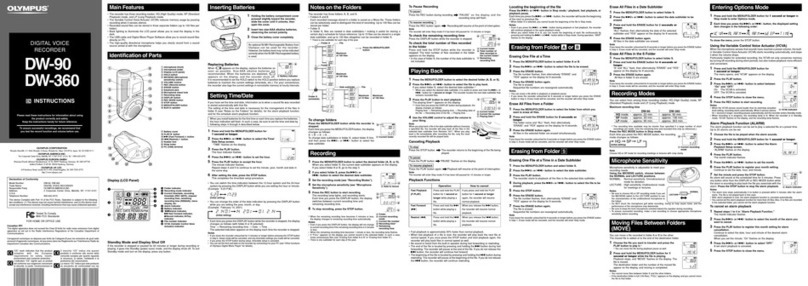1. Short description
The module is a four-channel CV recorder/looper that records and plays back voltage curves
from very slow speeds to faster speeds by moving the controllers.
You can record control voltage courses from analogue sequencers, LFOs, envelope generators,
joysticks etc..
The input/output CV of each channel can range from -5v..+5v or 0..+9v.
SOURCE is the CV source of the track for the recordings. This can be the CV input, the poten-
tiometer or both.
ZOOM is a two stage fine adjust function of the control ruler.
Synchronization via clock or MIDI and "punch-in" recordings are possible.
The output is a smoothed voltage without audible increments (algorithm with 16 bit resolution).
While the Clock/MIDI Synchronisation is used, they have two different levels (HARD/SOFT) for
the CV interpolation.
Independent of selected sync mode, the recording time per channel is up to one hour (such us
MIDI clock).
Function LINK: All four channels can be used individually or in groups of two or four tracks at
any one time (for multitrack or joystick recording).
There are different playback modes and several functions for the playback controls.
The different modes include: one-shot, triggered by a gate, a push-button or by MIDI-start/stop.
The sample can be looped as well.
Using the SCAN mode, the recorded sample can be scanned via CV input or the pot of the chan-
nel. It is possible to play manually the track velocity and direction (feasible effects: reverse, ran-
domized, stuttering).
The start point, end point and the speed of playback or of the loop is set with the CVs or pot
(functions: START, LENGHT, SPEED).
The memory is non-volatile, as such the recordings and settings remain unchanged when the
modular system is powered down.
Software updates are possible via MIDI sysex dump.
MIDI adapter is included with the unit.
3
